Successor Mithridates II Died 38 BC Name Antiochus Theos | House Orontid Dynasty Burial Mount Nemrut Spouse Isias | |
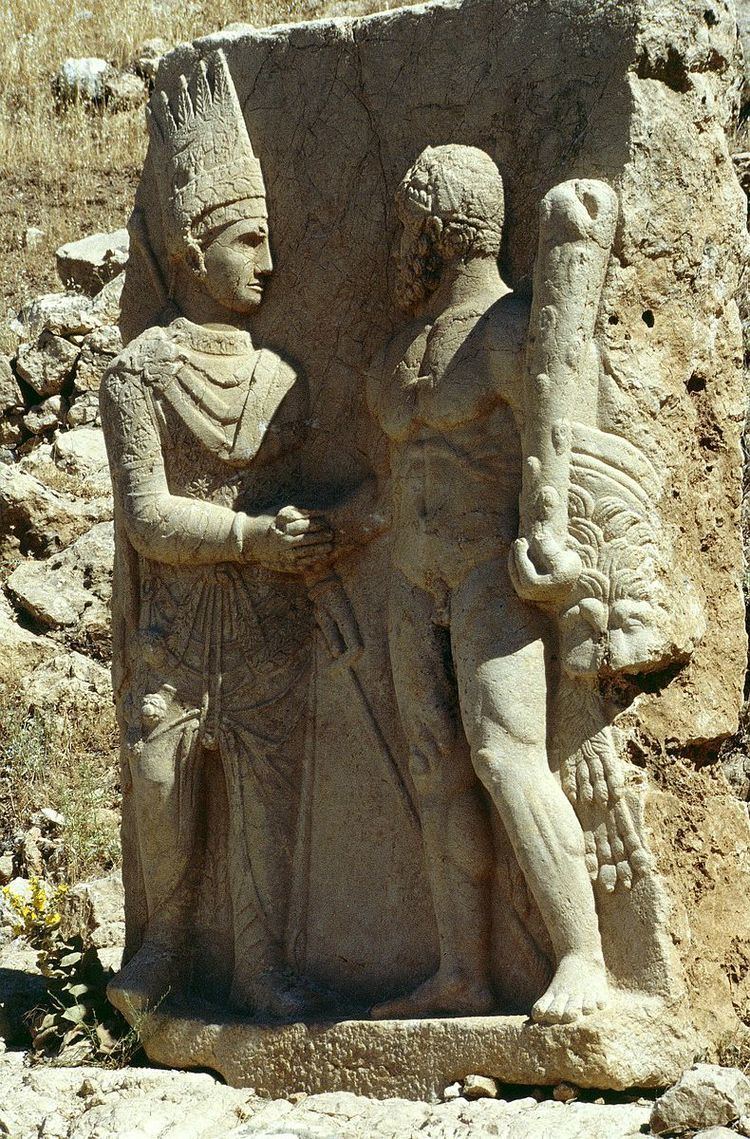 | ||
Reign 70 BC – 38 BC
(32 years) Predecessor Mithridates I Callinicus Issue Mithridates II of Commagene
Laodice, Queen of Parthia
Prince Antiochus II
Princess Antiochis
Athenais, Queen of Media Atropatene Children Mithridates II of Commagene, Antiochus II of Commagene, Antiochis of Commagene, Laodice of Parthia Parents Mithridates I Callinicus, Laodice VII Thea Grandchildren Pacorus I, Mithridates III of Commagene Grandparents Antiochus VIII Grypus, Sames II Theosebes Dikaios Great grandchildren Queen Iotapa of Emesa, Antiochus III of Commagene, Iotapa | ||
Antiochus I Theos Dikaios Epiphanes Philorhomaios Philhellen (Armenian: Անտիոքոս Երվանդունի, Ancient Greek: Ἀντίοχος ὁ Θεὸς Δίκαιος Ἐπιφανὴς Φιλορωμαῖος Φιλέλλην, meaning Antiochos, a just, eminent god, friend of Romans and friend of Greeks, c. 86 BC – 38 BC, ruled 70 BC – 38 BC) was an Armenian king from the Kingdom of Commagene and the most famous king of that kingdom.
Contents
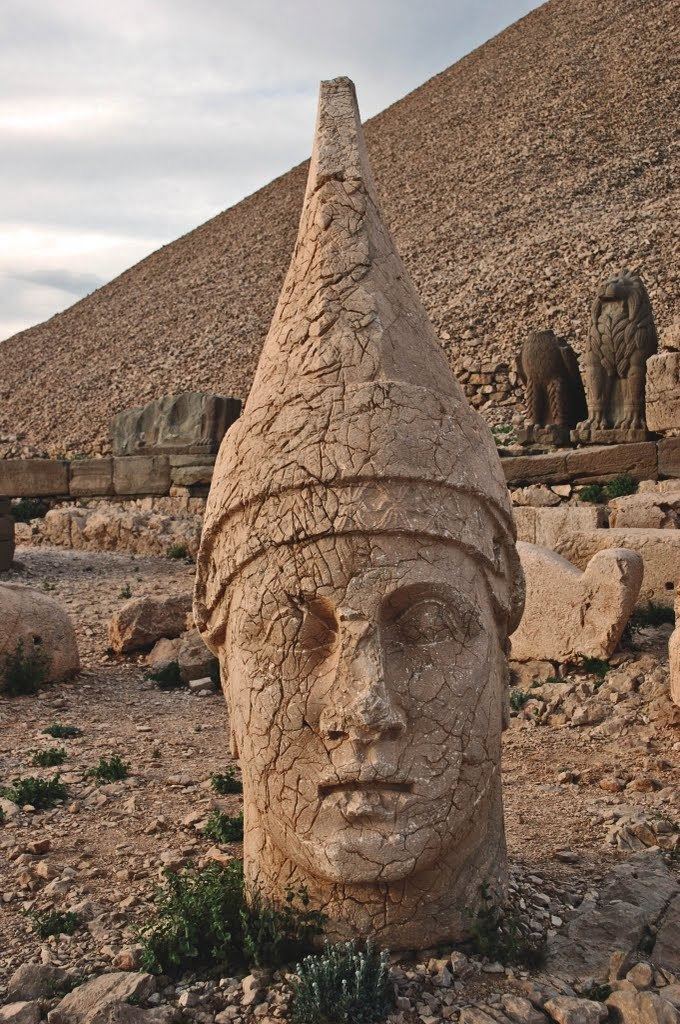
The ruins of the tomb-sanctuary of Antiochus atop Mount Nemrut in Turkey were named to the UNESCO World Heritage list in 1987. Several sandstone bas reliefs discovered at the site contain some of the oldest known images of two figures shaking hands.
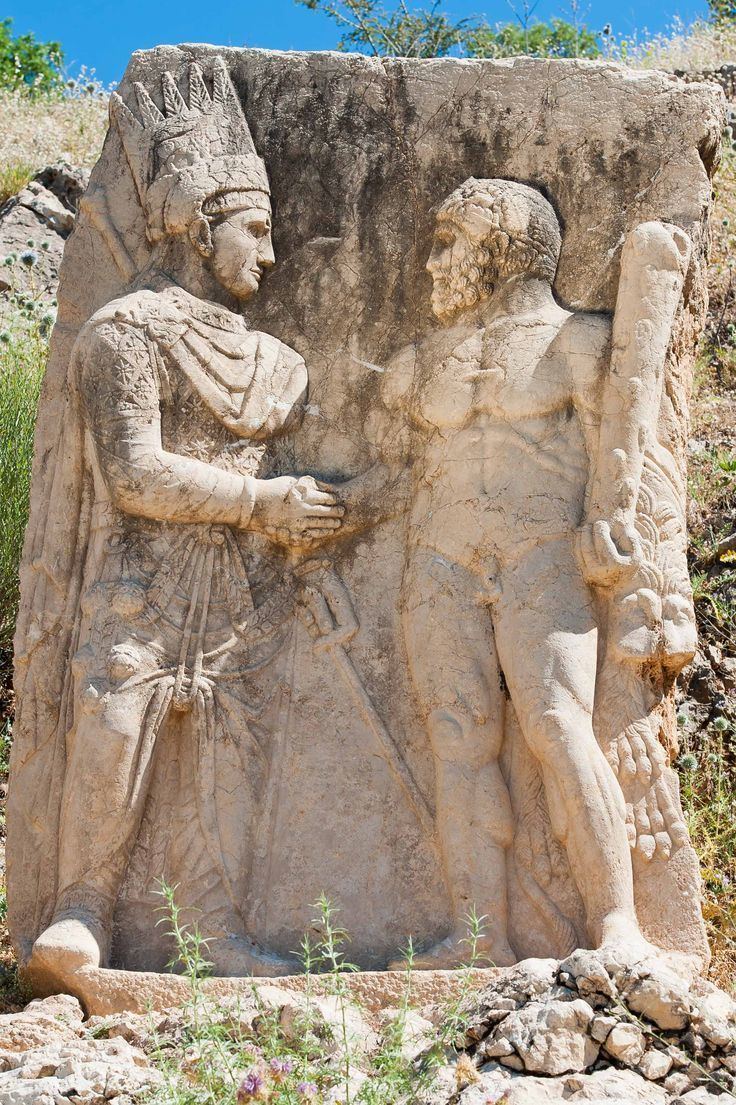
Family, ancestry and early life
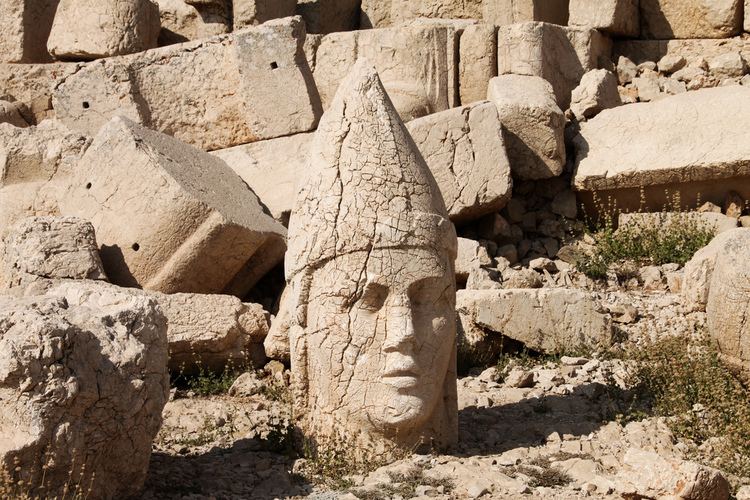
Antiochus I was the son and probably the only child of King Mithridates I Callinicus and Queen Laodice VII Thea of Commagene. Antiochus was half Armenian, a distant member of the Orontid Dynasty and half Greek. Antiochus’ father Mithridates was the son of King of Commagene Sames II Theosebes Dikaios and an unidentified woman. Mithridates was possibly related to the kings of Parthia and, in the light of archaeological discoveries at Mount Nemrut, even claimed descent from the Achaemenid family of King Darius I the Great of Persia.
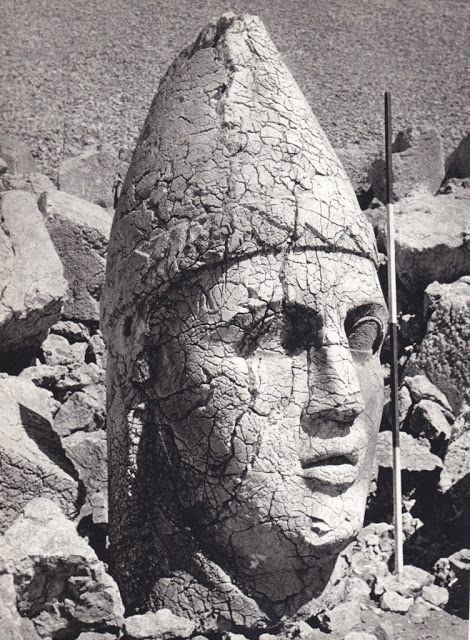
More certain are his dynastic connections to the Diadochi. Antiochus’ mother, Laodice VII Thea, was a Greek princess of the Seleucid Empire. Laodice’s father was the Seleucid King Antiochus VIII Grypus, while her mother was a Ptolemaic princess and later Seleucid Queen Tryphaena (see Cleopatra VI of Egypt). Thus, Antiochus was a direct descendant of Seleucus I Nicator of the Seleucid Empire, Ptolemy I Soter of Egypt, Antigonus I Monophthalmus of Macedonia and Asia, Lysimachus of Thrace and the Macedonian regent, Antipater. These five men, the Diadochi 'successors', had served as generals under Macedonian King, Alexander the Great. Antiochus’ parents had married as part of a peace alliance between their kingdoms. Little is known of his early life and education, aside from its philhellenic aspect; however, it seems that when his father died in 70 BC, Antiochus succeeded his father as king.
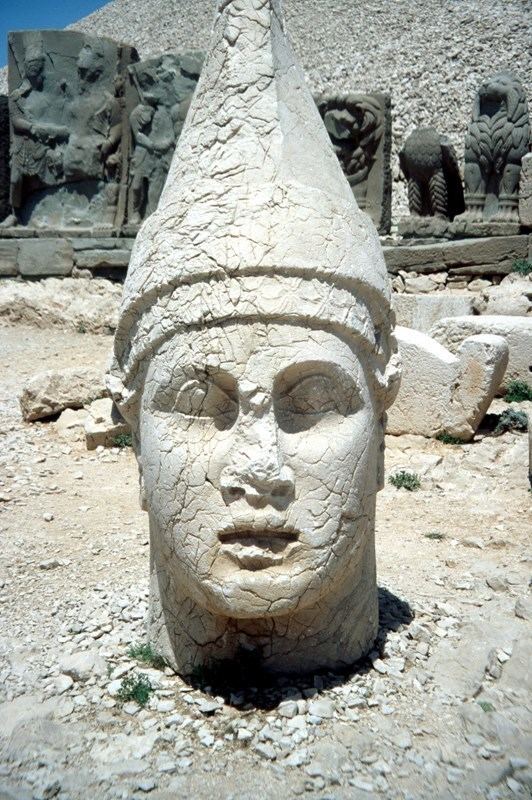
Antiochus married Princess Isias Philostorgos of Cappadocia, daughter of King Ariobarzanes I of Cappadocia and his wife Athenais Philostorgos I. They had five children:
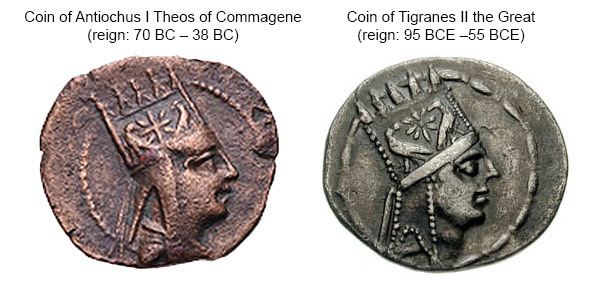
Relations with the Romans
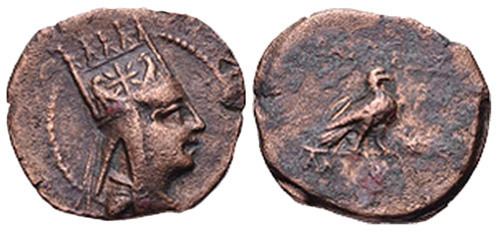
While the Roman Republic was annexing territories in Anatolia, Antiochus, through skilled diplomacy, was able to keep Commagene independent from the Romans. Antiochus is first mentioned in the ancient sources in 69 BC, when Lucullus campaigned against the Armenian King Tigranes the Great. Antiochus made peace with the general Pompey in 64 BC, when Pompey successfully invaded Syria. Antiochus and Pompey then became allies. Antiochus in 59 BC was granted the toga praetexta and given official recognition from the Roman Senate as an ally to Rome. Antiochus received an ivory sceptre and an embroidered triumphal robe, and he was greeted as "king, ally and friend". This recognition was a traditional way of recognising and rewarding the allies to Rome. From his reign onwards, monarchs from Commagene proved to be the most loyal Roman allies. When Marcus Tullius Cicero was Roman governor of Cilicia in 51 BC, Antiochus provided Cicero with intelligence of the movements of the Parthians. During the civil war between Julius Caesar and Pompey, Antiochus provided troops for Pompey.
In 38 BC, a legate of Triumvir Mark Antony, Publius Ventidius Bassus, after campaigning against the Parthians, wanted to attack Antiochus and his kingdom. Antony and Bassus were attracted by Commagene's wealth. Yet as they were preparing to march against Commagene and its capital Samosata, Antiochus negotiated a peaceful settlement with them.
Mount Nemrut
Antiochus is famous for building the impressive religious sanctuary of Nemrud Dagi or Mount Nemrut. When Antiochus reigned as king he was creating a royal cult for himself and preparing to be worshipped after his death. Antiochus was inspired to create his own cult in the Greek form of the religion Zoroastrianism. Antiochus left many Greek inscriptions revealing many aspects of his religion and explaining his purpose of action. In one inscription, Antiochus directed that his tomb should be built in a high and holy place, remote from people and close to the gods, among whom he would be numbered. Antiochus wanted his body to be preserved for eternity. The gods he worshipped were a syncretism of Greek, Armenian, and Iranian gods, such as Hercules-Vahagn, Zeus-Aramazd or Oromasdes (associated with the Iranian god Ahura Mazda), Tyche, and Apollo-Mithras. The monumental effigies at the site show both Persian and Greek iconographic influences: Persian influences can be seen in the clothes, headgear and the colossal size of the images, while the depiction of their physical features derives from Greek artistic style.
Antiochus practised astrology of a very esoteric kind, and laid the basis for a calendrical reform, by linking the Commagenian year, which till then had been based on the movements of the Moon, to the Sothic (Star of Sirius) cycle used by the Egyptians as the basis of their calendar. This would suggest that Antiochus was knowledgeable about, if not fully initiated into Hermeticism.
Antiochus’ tomb complex was constructed in a way that religious festivities could occur there. Every month there were two feast-days for Antiochus: his birthday, which was celebrated on the 16th of each month, and his coronation, which was celebrated on the 10th of each month. He allocated funds for these events from properties legally bound to the site. He also appointed families of priests and hierodules to conduct the rituals, and their descendants were intended to continue the ritual service in perpetuity. The priests wore traditional Persian robes and adorned the images of the gods and Antiochus' ancestors with gold crowns. The priests offered incense, herbs, and other unspecified "splendid sacrifices" on altars set before each image. All the citizens and military were invited to the banquets in honor of the illustrious deceased. During the feasts, grudging attitudes were forbidden and Antiochus decreed that the people should enjoy themselves, eat and drink wine, and listen to the sacred music performed by the temple musicians.
Antiochus’ tomb was forgotten for centuries, until 1883 when archaeologists from Germany excavated it. According to the inscriptions found, Antiochus appears to have been a pious person and had a generous spirit. The ruins of the royal palace have been found in another city of the kingdom, Arsameia. This palace is known as Eski Kale or 'Old Castle'. In Arsameia, Antiochus has left many inscriptions in Greek of his public works program and how he glorified the city.
